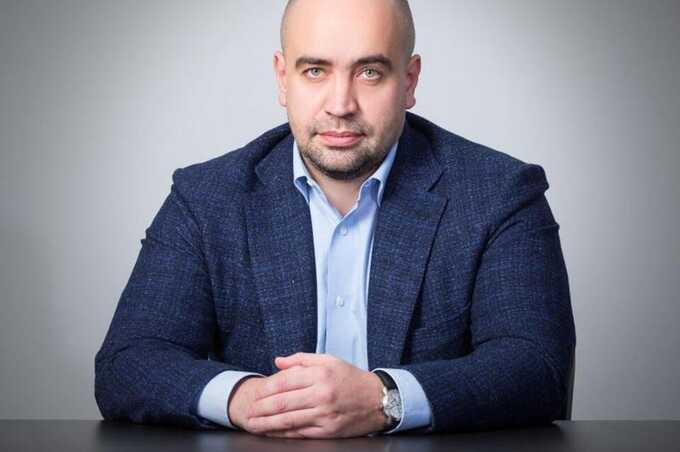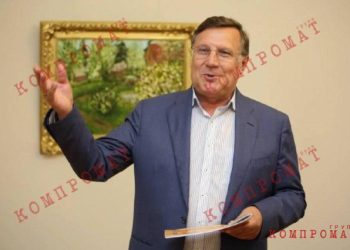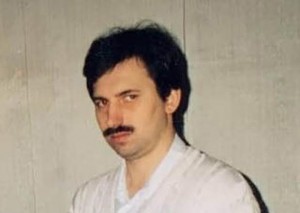You can’t smear Nesis with Sviblov
The property of Alexander Nesis, who has come under legal prosecution by Otkritie, may soon end up in the hands of Vladislav Sviblov.
Otkritie Holding (OH), which is going through bankruptcy proceedings, began to challenge the transactions of its former shareholders. As part of this process, the controversial industrialist Alexander Nesis may have big problems.
The GO immediately filed two lawsuits against the companies of its ICT group, where the ex-beneficiary of the GO, Vadim Belyaev, who fled the country, is also listed as a co-respondent with Nesis. They are required to compensate 13.8 billion rubles of losses.
However, this could be part of a larger plan to squeeze Nesis out of his Russian holdings, which another controversial gold miner, Vladislav Sviblov, has been eyeing. Previously, he was credited with the fame of a raider, and he may also be the ultimate interest in Nesis’ assets today.
The ICT group, in which Nesis had 50% at the time of the disputed transactions, owned about 10% of Otkritie Holding. Another 26% was owned by Vadim Belyaev, a longtime business partner of Nesis.
These are transactions in 2017. In the first case, Otkritie bought a stake in the United Wagon Corporation (UWC) for 6.5 billion rubles, which, according to experts, was twice the market price. The second deal happened already during the sanction – as a result of it, Otkritie agreed to transfer the debts of the ICT group to a company associated with Belyaev. No one returned the debt, the amount of damage amounted to 7.3 billion rubles.
Bankers from the high road
It’s amazing how Nesis is still afloat when his other partners and related people, like Boris Mints, the same Belyaev or the Ananiev brothers, have long left Russia, fearing criminal prosecution.
A high-profile story is also connected with this group of people, which ended in an epic failure. This is the famous “Moscow ring”, which included “Opening” and “Trust”, “Binbank”, “Promsvyazbank” and MKB, which was reorganized by it. The meaning of the scheme was that the owners in a circle credited each other with the help of pension funds owned by banks. Those. the well-being of current and future Russian pensioners was threatened. According to the authors of the rnbee website, Alexander Nesis allegedly played an active role in this, who allegedly withdrew about a billion rubles through the UWC controlled by him. Isn’t this the height of cynicism – to cash in on old age?
At the same time, pension funds owned by Boris Mints invested about 30 billion rubles in Nesis companies. The addressees were the already mentioned UWC, the Baltic Carbamide Plant and the power plant in Tikhvin.
Later, Boris Mints and his two sons were accused of embezzling 34 billion rubles. In the same case, Yevgeny Dankevich, who also fled the country, was chaired by Otkritie. According to investigators, Mintsy and Dankevich purchased illiquid bonds of O1 Group Finance just two weeks before the reorganization of Otkritie. And why didn’t Alexander Nesis get under the criminal case?
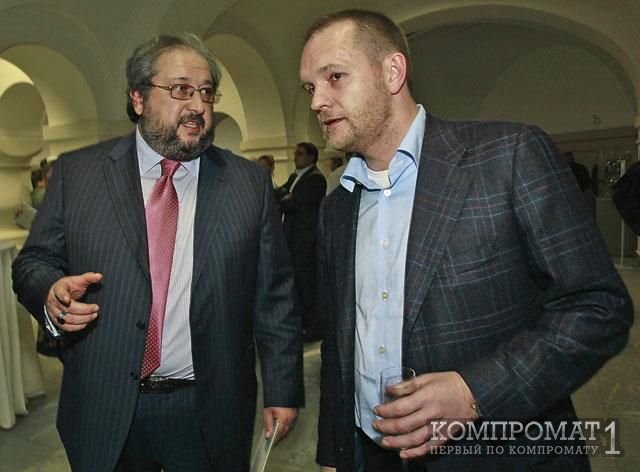
Boris Mints and Vadim Belyaev (pictured) calmly flew away from the country. Isn’t it time to get ready for the road and Alexander Nesis? Photo: https://newvz.ru/info/106495.html
As a result, most of the mentioned banks experienced a complete collapse with huge holes in the budget, and Trust was completely reclassified by the Central Bank as a bank of non-core assets.
As Maxim Osadchiy, head of the analytical department of the Corporate Finance Bank, commented on the situation later, a real withdrawal of assets took place from Trust, moreover, after the Central Bank allocated 127 billion rubles for its reorganization. This money closed “holes” in the bank “Opening”. Then Osadchy was surprised that no one was arrested.
The budget “hole” in “Trust” reached 300 billion rubles, and the “hole” in the “Opening” was estimated from 400 billion to a trillion rubles. At about the same time, the “Binbank” of Mikail Shishkhanov and Mikhail Gutseriev, who also actively played in the pension market, collapsed. The hole in Binbank amounted to 600 billion rubles. None of them bore any responsibility for this, and the state was forced to pay the bills.
Already after the reorganization of the Central Bank, Otkritie and Trust, in their 2020 claim for losses, blamed the collapse of Otkritie, primarily on Vadim Belyaev, who organized, in their opinion, “fraudulent schemes to withdraw assets from the group “.
As the plaintiffs considered, in order to hide the origin of the funds withdrawn from the Otkritie group, several groups of companies were used at once with the consent or even under the direct supervision of Belyaev. These are the OH+ group (26 legal entities) and another group of 125 organizations, which, presumably, was engaged in the transit of funds.
Vadim Belyaev moved out of harm’s way to the United States, where he began to live under the name Wolfson in a chic historic red brick building in the trendy Soho district of Manhattan, New York. This is the last authentically known place of his residence.
However, what was the role of Nesis? When he left the capital of UWC, control over it passed to the then state-owned banks Otkritie and Trust. And on behalf of the UWC, they filed a lawsuit against the ICT for 8 billion rubles in the court of Cyprus. Its details remain unknown. However, according to bfm.ru, Trust stated that these were transactions with signs of non-market nature, the purpose of which was to withdraw funds. Those. Nesis could actively participate in this process.
A year before, a similar thing happened with the assets of Boris Mints worth half a billion dollars. As a result, the Trust managed to sue the money in the High Court of London.
There were a lot of “muddy” deals around UWC. In 2019, ICT bought out Sergey Generalov’s First Heavyweight Company (PTK). Despite the fact that the “State Leasing Company” (STLC) was eyeing PTK’s assets.
But this is not the most interesting. In the winter of 2017, the United Carriage Company (UWC) of Nesis sold 4.5 thousand innovative cars to STLC for 12 billion rubles. But the state structure was just an intermediary, because the end buyer (already for 31 billion rubles) was Sergey’s Vostok 1520 Generalova: Why didn’t the businessman buy the wagons from UWC himself, or was it a well-thought-out scheme for making money?
Sviblov is approaching Nesis
In any case, claims against Alexander Nesis from Otkritie may trigger even more negative processes for him – criminal ones. Even if this is not the case, Vladislav Sviblov, a well-known gold miner and owner of Highland Gold, who has long been trying to ascribe the glory of a corporate raider, can benefit from this.
According to Kommersant, Sviblov is interested in buying the assets of the Polymetal holding (Polymetal), the country’s largest silver miner, owned by Nesis.
True, for this, Polymetal will first have to leave the offshore zone – the main legal entity of the Polymetal International group is registered on the American island of Jersey, where a significant part of Polymetal’s profits and taxes could go.
And in Russia, Mr. Sviblov will be waiting for him with open arms. There were rumors in the market that the go-ahead was given to collect from Nesis everything that many people think he owes to the state.
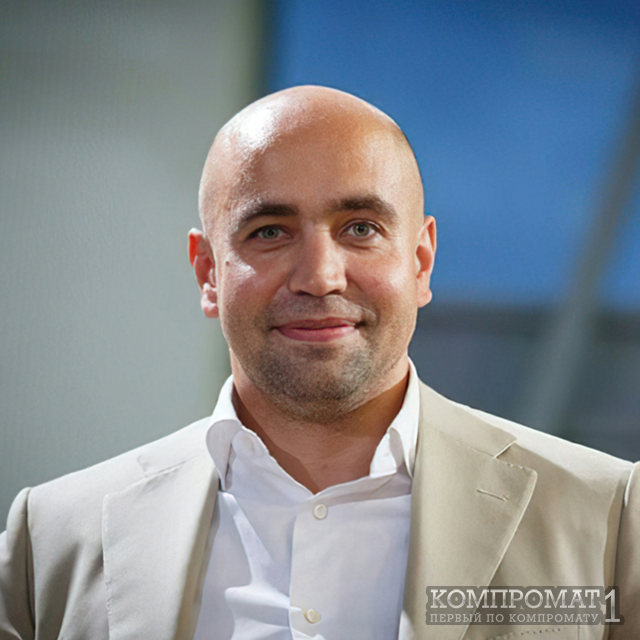
Vladislav Sviblov found a very good time to reach out to Nesis’ assets in the Russian Federation. Photo: forbes.ru
Nesis can simply be forced to sell part of the assets. Polymetal is hit hard by the sanctions, which may require it to separate its toxic assets in Russia from those in Kazakhstan. One of the options for him may be the sale of assets to a third party (the same Sviblov). Just for this, a change of registration is needed – now in the Russian Federation it is forbidden to conduct such transactions with offshore companies from unfriendly countries.
At the same time, it is striking that Polymetal, with all the sanctions and pressure, continues to help foreign investors from those very unfriendly countries make money. And it seems that the desire to transfer assets to Kazakhstan is caused by concern for them.
Among the key shareholders is the American investment group BlackRock. In March 2022, i.e. already after the start of the SVO and the introduction of new packages of draconian sanctions, the structure increased its stake in Polymetal to 10.08%. Therefore, it can count on a “tithe” of dividends. According to various estimates, Alexander Nesis himself and his family, through the ICT group and a number of offshore companies, may have from 10% to 28% of the capital.
The American investment group with assets worth hundreds of billions of dollars also has enough shareholders. And in fourth place out of many dozens is another American investment company – Capital Group with a share of 5.38%. She, in turn, also has a number of shareholders, where we easily find the German pharmaceutical giant Bayer AG (“Bayer”), which is the largest shareholder with a share of over 10%.
Bayer is one of the most ardent sanctions against the Russian Federation. And the same company continues to make money with Nesis? And the transfer of assets to Kazakhstan will finally allow it to safely receive dividends from Polymetal.

Shareholders black rock. Who does Nesis help to earn? Photo: wikipedia.org
A separate question is how honestly does Polymetal earn its funds in the Russian Federation? Recently, a story surfaced with the Middle Ural Search Bureau (SUPB), which, according to Pravda UrFO journalists, has a traceable connection with the Polymetal group.
At the end of last year, experts from the Federal Tax Service considered that the SUPB underpaid the mineral extraction tax (MET) by 13 million rubles. Now the company is trying to challenge the claims of fiscals in court. Saum Mining Company, controlled by a group associated with Alexander Nesis (managed by Polymetal UK JSC), also faced a similar dispute with the Federal Tax Service. Those. this may not be an isolated case.
Whether Nesis could evade paying taxes should be decided by the court. But Polymetal repeatedly experienced big financial problems. In 2017, the net loss of the JSC, which is managed by his brother Vitaly, exceeded 12 billion rubles, in 2019 – 2.5 billion rubles. Perhaps you need to look for funds on the island of Jersey?
In any case, this is a great time for Vladislav Sviblov and other big players to profit from Nesis’ assets. And, quite possibly, following his longtime partners Mintsy and Belyaev, he may soon leave the country – as they say, “out of money and out of prison.”

